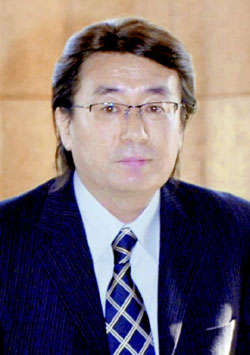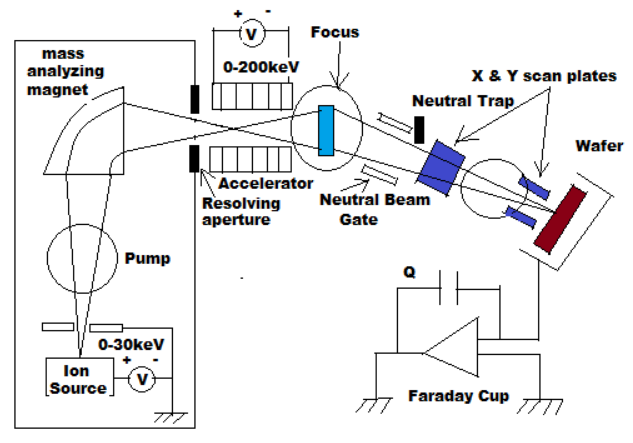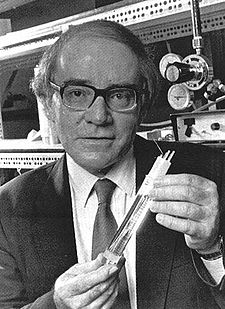
Supernova Conditions Readily Created In A Test Tube
Hidetsuga Ikegami, one of Japan’s great physicists describes cold fusion as being pycnonuclear (star-like) in nature

Hidetsugu Ikegami is a Japanese physicist. He is professor emeritus of Nuclear Physics at Osaka University, where he has been director of the Research Center for Nuclear Physics. He’s also a professor at Uppsala University in Sweden.
Ikegami’s paper (October 2012) on what he calls chemonuclear and pycnonuclear fusion is jam-packed with pertinent insight and mathematics. He describes how his lifetime of nuclear science and more than ten years of recent research within the conventional high energy physics world studies of chemo-pycno-fusion have defined and demonstrated the bridge between the two camps of Hot and Cold Fusion. His work has languished unknown but to a few.
Ikegami points out through both experimental and mathematical rigorous proofs that conditions inside the metal(s) and methods common to cold fusion conditions are produced equivalent states of matter to those found inside stars including the most exotic white dwarfs and supernova. Here on Earth though that supernova matter is more like supernova ice – almost as exotic as Vonnegut’s ice nine 🙂
Condensed Cold Micro Supernova Matter
These micro supernova conditions yield energy at a density that Ikegami’s math shows is a million times more than that found inside of typical stars and physical evidence in experiments in the form of alpha particles and helium.
He chronicles conditions that exist when hydrogen enters into metals where it changes from its molecular (H2) to atomic (H) form and beyond. Inside the realm of the metal and its powerful influence hydrogen atoms and their lone electrons can condense and that condensed matter is super dense.
Pools of this dense condensed hydrogen achieve conditions of density like those in super dense stars like white dwarfs, even supernova, and in that condition fusion is virtually certain to take place. Very conventional stellar mathematics show that density supplants temperature as the defining requirement for fusion – cold fusion.
In the condensed matter, electrons act to screen the Coulomb repulsion between the atomic nuclei and this screening effect becomes so remarkable that rates of reactions at low temperatures are almost independent of the temperature and mostly depend on the density of the matter.
While spill over condensing hydrogen is the key, atoms of other elements can and do become part of, spill over into, the puddle of super dense hydrogen. The lower mass small atoms like lithium and beryllium are highly favoured to participate in the fusions but other heavier atoms like nickel and palladium can and do participate as well.
Ikegami’s work describes the exotic plasma conditions for fusion includes dense plasmas that are in the form of Bose Einstein Condensates. While in free space such condensed matter requires very challenging efforts to create as hydrogen seeps into the cracks and crevices inside metals and between larger atoms such condensed matter forms in very simple environments. Examples of this are seen in the electrochemical loading of hydrogen into metal as reported by Fleischmann and Pons in 1989. Or more recently by those pursuing Nickel Hydrogen energy where the application of high temperatures (~800-1000°C) helps the hydrogen to dissolve into the metal. The HOT CATS of Rossi, Piantelli, Parkhomov… and more.
Lithium Experiment

Typical ion implantation device schematic. The ‘wafer’ is the target. Ikegami used deuterium ions and a liquid lithium target.
A seminal experiment carried out by Ikegami in 2001 is one in which liquid lithium metal was infused with deuterium nuclei via ion implantation. The experiment appeared to produce nuclear fusion under conditions where conventional wisdom forbade such fusion.
Soon after this first experiment another group in Sweden reproduced it and definitively saw pycnofusion and the production of helium/alpha particles. Again a third series of experiments in Tokyo showed evidence of fusion in metal at an enhanced rate of 40 orders of magnitude beyond what conventional dogma allowed. For more than 10 years these remarkable chemofusions (cold fusion) observations languished in obscurity.
Fleischmann and Pons first noted the requirement/utility for lithium in their 1989 pronouncement of cold fusions discovery. They were uncertain as to the role of the lithium but experimentally it had proven to be virtually a necessity. Surely in their electrochemical systems lithium was seen to accumulate on and in their palladium cathodes where cold fusion took place. The lithium likely did not gove very deep in the palladium but surely it could reach down a few atomic layers. Fleischmann and Pons remained focused on excess heating in their experiments and did not look for helium or metal isotope signatures.
My own work using intense ultrasonic cavitation massively implanted deuterium into palladium and other target metals. The results were consistently striking as seen in dramatic macroscopic melting along with observable microscopic melting as evidenced by volcano-like eruptions of molten palladium (and other elements) from the surface of the target metal. Gases from the liquid experiments revealed high levels of 4He many times the 5.22ppm concentration of helium in air.

Cavitation induced cold fusion palladium target clearly melted while immersed in circulating heavy water.
Further study of the metal targets revealed well-known internal helium ‘loop punching’ features while melting samples of the metal targets yield high levels of helium being released from the metal. Palladium isotope anomalies were also identified that had no explanation save nuclear transformations.
More recently cold fusion systems have been commonly based on hot gaseous systems where powdered ingredients heated with hydrogen and deuterium are heated at modest temperatures of 100-200° C, in such cases I and others with online helium mass spectrometers have repeatedly observed production of large amounts of helium growing into the experiments over long periods of time (up to several weeks.) Other experiments operated at 800-1000° C or more are effectively smelted together resulting in exotic alloys of multiple metal, always including lithium and hydrogen. Starting out with chemically bound ‘solid hydrogen’ and in tightly sealed ‘micro-smelters’ the stuff of stars is born and cold fusion results.
Ikegami’s Bridge
Ikegami has shown us the pier he has built out from the HOT fusion enemy camp toward our cold fusion community. As more and more planks are laid on the bridge between HOT and COLD fusion are laid the community of science is undergoing a most desirable fusion of ideas. At the same time practical technologies that can deliver useful inexpensive non-polluting and limitless fusion energy are springing forth like flowers in spring time. Just in time perhaps to save us all from the polluting ravages of the fossil fuel age.
Now where did I put that sample of lithium beryllium doped palladium I always planned to test. Perhaps a Fleischmann/Dyson sphere is in order.
Endnote:
Ever since Fleischmann and Pons pronounced their cold fusion in a tea-cup experiments the HOT fusion camp has engaged in all out war against any and all who might embrace cold fusion. With a vastly larger number of people employed by HOT fusion sadly a number of outrageous personalities, a hot fusion granfalloon, was allowed and facilitated to stir up a pool-pah in the HOT fusion crowd that became a 25 year frenzy of dogmatic hate speech. Countless people have been duped into thinking that Cold Fusion isn’t real. Here’s a link to a litany of the outrageous comments that suffices to recall and illustrate the offenses.
The banner image is of Supernova 1987A.


